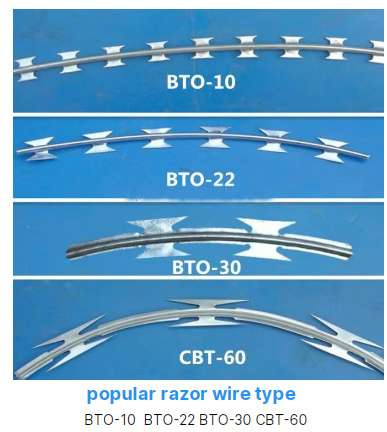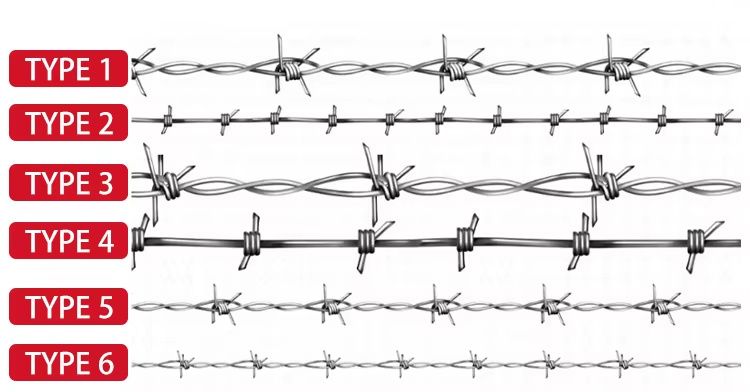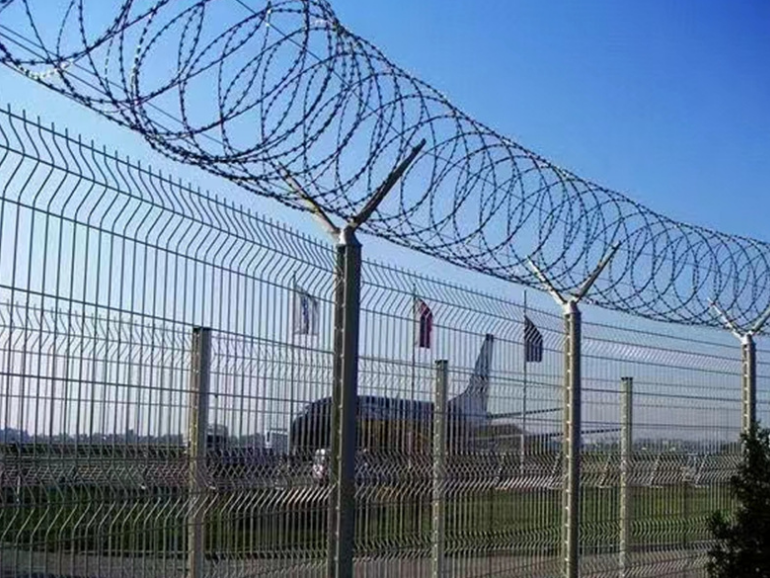Is BTO-22 Concertina Razor Wire Better Than Barbed Wire for Security?
Time:
2025-06-20
When fortifying a perimeter, the choice of barrier is critical. Two common options are traditional barbed wire and the more advanced BTO-22 concertina razor wire. While both serve as deterrents, their effectiveness, design, and suitability vary significantly. Understanding the key differences between BTO-22 concertina razor wire and barbed wire is essential for selecting the right security solution.
What Makes BTO-22 Concertina Razor Wire Different?
BTO-22 concertina razor wire represents a substantial evolution beyond basic barbed wire. Its defining feature is the use of sharp, stamped steel blades instead of simple twisted points. Specifically, the BTO-22 blade profile features a distinctive shape designed for maximum deterrence. These blades are crimped at regular intervals onto a high-tensile galvanized steel core wire. The entire assembly is then coiled into large, spring-like loops (concertinas), typically ranging around 450-500mm in diameter. When expanded, these coils create a dense, three-dimensional barrier that is extremely difficult to compress, climb over, or cut through without sustaining serious lacerations.
In contrast, traditional barbed wire consists of two strands of wire twisted together, with shorter, pointed barbs spaced along its length. It primarily relies on the threat of puncture wounds and snagging clothing.

Key Differences: BTO-22 Concertina Razor Wire vs. Barbed Wire
Blade Design and Lethality
BTO-22 Concertina Razor Wire: Features razor-sharp blades (typically 0.50 ± 0.05mm thick for BTO-22) designed to inflict deep, slicing cuts upon contact. The BTO-22 profile creates multiple cutting edges per blade point. The concertina structure means blades face in all directions, maximizing the chance of contact.
Barbed Wire: Uses pointed barbs designed to poke and snag. While painful and capable of causing puncture wounds, the injuries are generally less severe and less immediately incapacitating than the deep lacerations caused by razor blades.
Material and Construction
BTO-22 Concertina Razor Wire: Made from galvanized steel (hot-dip or electro-galvanized) or stainless steel for corrosion resistance. The core wire (approx. 2.50mm diameter) provides structural integrity. Blades are precision-stamped and securely attached. Coils are clipped together for stability and density. Standard BTO-22 rolls often cover 9-10 meters per coil.
Barbed Wire: Generally made from galvanized steel wire. Construction is simpler – twisted strands with barbs formed from the wire itself or attached points. Less robust overall.

Installation and Barrier Density
BTO-22 Concertina Razor Wire: Installed as pre-formed coils that expand to create an immediate, dense barrier. Can be deployed rapidly as a single coil topping, double coils for higher density, or in pyramid formations for maximum obstacle depth. Its three-dimensional nature creates a significant physical and psychological barrier quickly.
Barbed Wire: Requires stringing between posts under tension. Creating a dense, multi-layered barrier takes significantly more time and material. Primarily creates a two-dimensional linear barrier.
Deterrence and Effectiveness
BTO-22 Concertina Razor Wire: Provides a vastly superior visual and physical deterrent. The sight of razor blades is far more intimidating than simple barbs. Its structure makes climbing extremely hazardous and slow, giving security forces ample time to respond. Highly effective against determined intruders. BTO-22 offers a strong balance of deterrence and cost.
Barbed Wire: Offers basic deterrence, primarily against casual trespassers or animals. Determined individuals can often breach it relatively quickly using thick clothing or mats, or by cutting the wires.
Applications and Suitability
BTO-22 Concertina Razor Wire: Ideal for high-security needs: military installations, prisons, critical infrastructure (power plants, communications), international borders, sensitive government facilities, high-risk commercial/industrial sites, and high-security residential areas. Also excellent for rapid deployment in temporary security situations (events, disaster zones). BTO-22 is a popular mid-to-high-level security blade choice.
Barbed Wire: Suitable for low-to-medium security applications: agricultural fencing (containing livestock, deterring wildlife), basic perimeter marking for rural properties, low-risk storage areas, or as a supplementary deterrent on top of other fences where maximum security isn't paramount.

Why Choose BTO-22 Concertina Razor Wire?
Superior Deterrence: The visual threat and physical danger of razor blades are far more effective.
Enhanced Security: Creates a much more formidable physical obstacle that is difficult and time-consuming to breach.
Rapid Deployment: Pre-formed coils can be installed quickly, especially crucial for temporary security.
Versatility: Can be mounted on walls, fences, gates, or used as freestanding barriers. Adaptable to various threat levels.
Durability: Galvanized or stainless steel construction ensures long life with minimal maintenance.
Cost-Effectiveness: Provides high-level security at a fraction of the cost of sophisticated electronic systems.
Frequently Asked Questions (FAQs)
Q: Is BTO-22 concertina razor wire legal for residential use?
A: Legality varies significantly by location. Always check local, state, and national regulations regarding the use of razor wire on residential property. Height restrictions, visibility requirements, and warning signage are often mandated. BTO-22 is a common blade type, but its use may still be restricted in residential zones.
Q: Does BTO-22 concertina razor wire require more maintenance than barbed wire?
A: Both types, if galvanized, require minimal maintenance. However, periodic inspections for damage or corrosion are recommended for any security barrier. The durability is similar when comparing equivalent materials (e.g., hot-dip galvanized).
Q: Can BTO-22 concertina razor wire be used on top of any fence?
A: It can be installed on most sufficiently sturdy fences (chain link, welded mesh, concrete walls, steel palisade). The supporting structure must be strong enough to hold the weight and withstand attempts to push or pull the coils down. Professional installation is highly recommended.
Q: Is BTO-22 concertina razor wire more expensive than barbed wire?
A: Yes, BTO-22 concertina razor wire is significantly more expensive per meter than basic barbed wire. However, it provides a substantially higher level of security. The cost-effectiveness comes from achieving a much greater deterrent effect and physical barrier with less linear footage needed compared to creating an equally formidable obstacle with barbed wire.
Q: Are there less visible options for BTO-22 concertina razor wire?
A: Yes, BTO-22 concertina coils are available with PVC coating (often green or black) to reduce visual impact and blend with surroundings, while maintaining the security properties. Stainless steel options also offer a less industrial look.
Conclusion: Matching the Barrier to the Threat
While barbed wire has its place in low-risk agricultural or basic perimeter applications, BTO-22 concertina razor wire offers a quantum leap in perimeter security. Its razor-sharp blades, dense concertina coil structure, rapid deployability, and powerful psychological deterrent make it the clear choice for protecting high-value assets, sensitive sites, borders, and areas requiring robust intrusion prevention. When security is paramount, the enhanced physical barrier and superior deterrence of BTO-22 concertina razor wire far outweigh the limitations of traditional barbed wire. Choosing the right barrier depends critically on accurately assessing the security threat level required.
keyword:
Razor Blade Fencing,Security Barrier Installation,Concertina Wire Applications,Intrusion Deterrence
Share the












